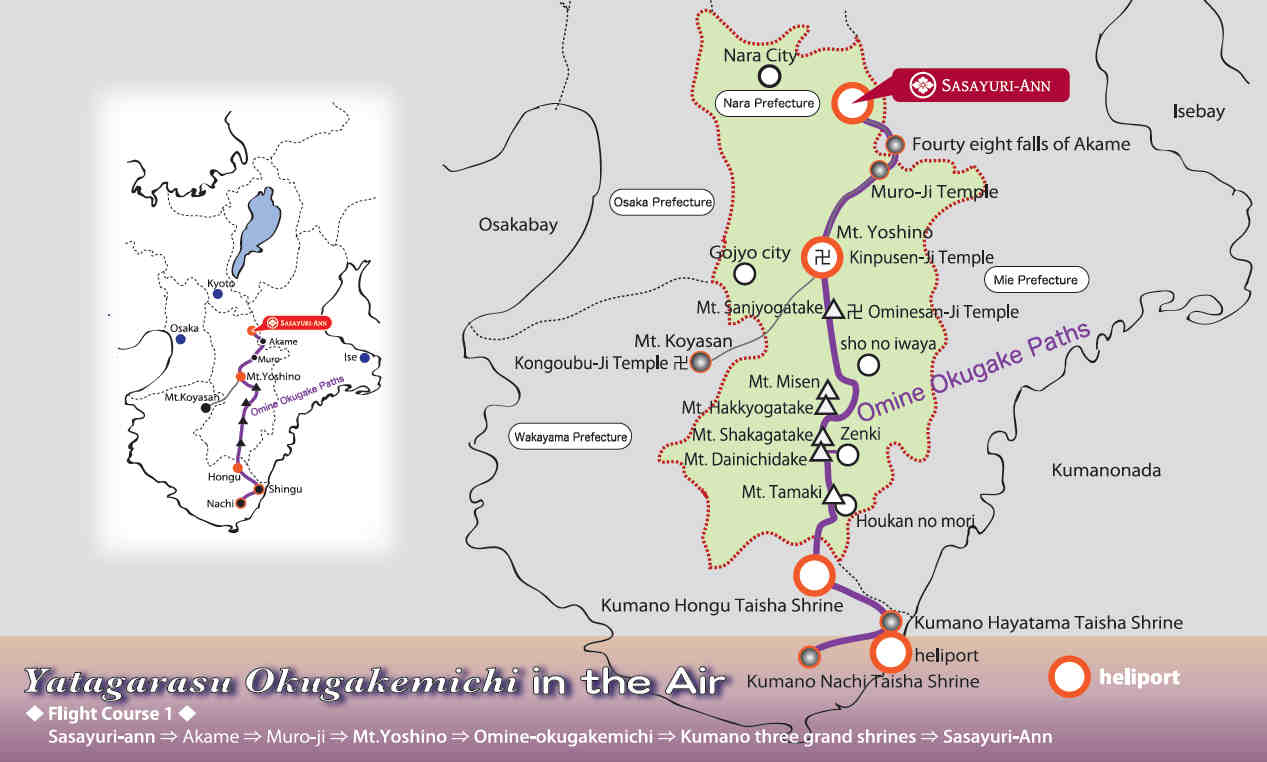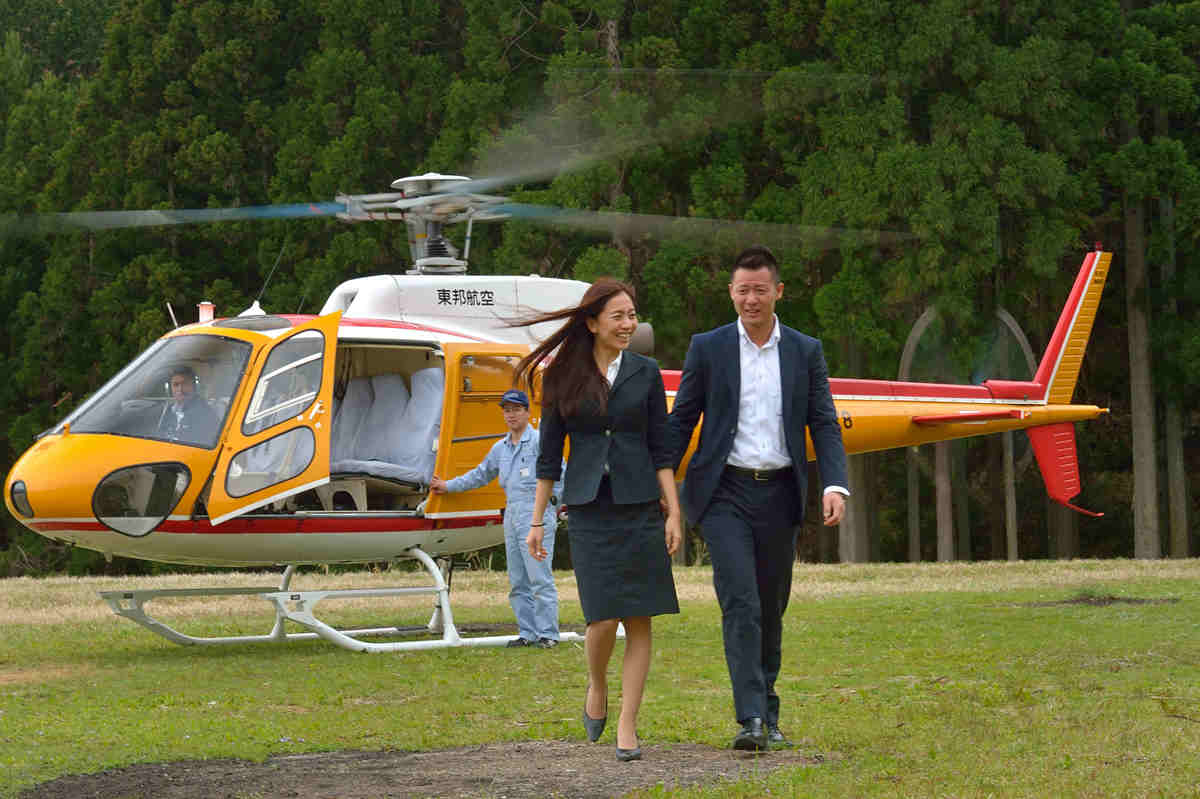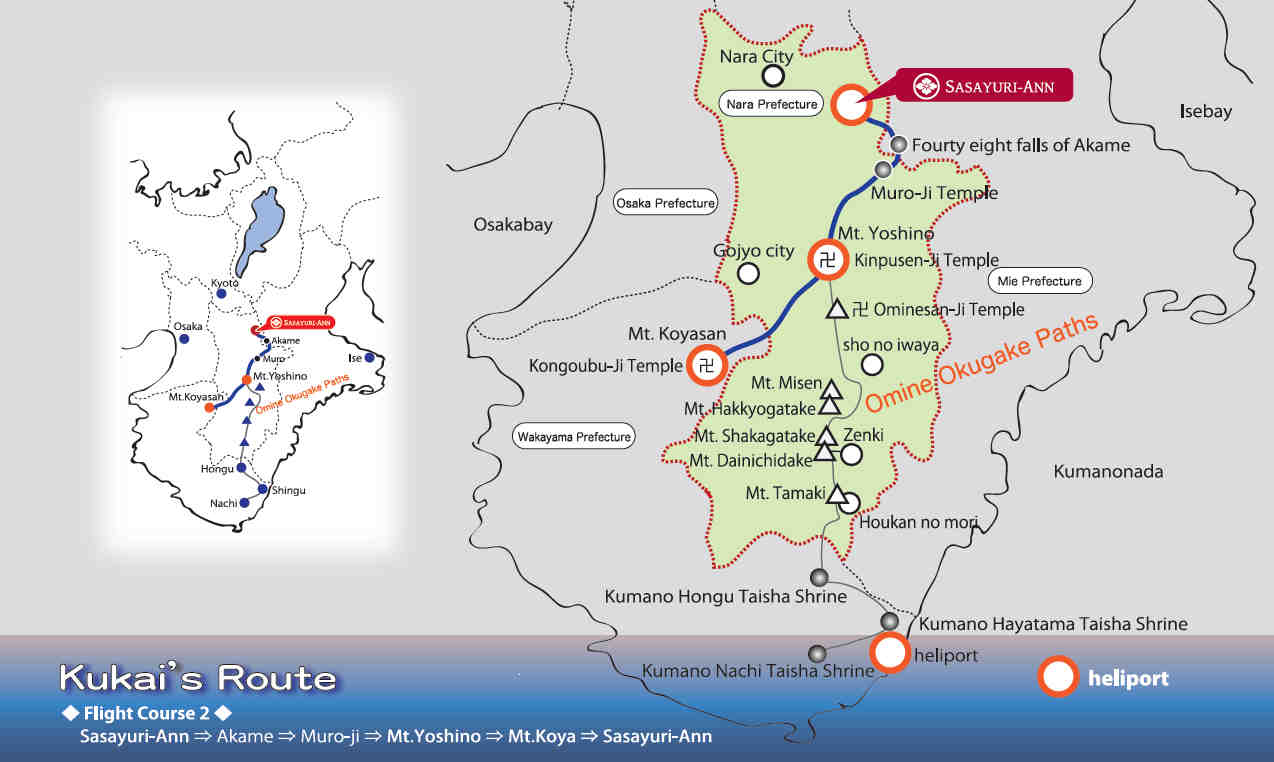Helicopter Pilgrimage to World Heritage Sites
Nestled in the base of Kii Peninsula and the border of Nara and Mie Prefecture, Sasayuri-ann sees Kyoto to the north, Ise to the east, and Nara and Osaka to the west. Furthermore, the two most sacred sites, Mt. Yoshino and Mt. Koyasan is to the south, which makes Sasayuri-ann a central location and a hub to travel around Kansai area. In addition to the conventional land transportation, we are excited to provide a memorable air travel that surely will be a once-in-a-lifetime experience.Three holy grounds (Yoshino, Omine, Mt. Koya and Kumano Sanzan) and its pilgrimage routes (Omine Okugakemichi, Koyasan Choishimichi, and Kumano Sankeimichi) were designated as UNESCO World Heritage Site in 7 July, 2004 as “Sacred Sites and Pilgrimage Routes in the Kii Mountain Range.”
Although these World Heritage Sites attract many domestic and international tourists, it is too huge a natural tourism resource to be covered in a short period of time due to the means of transportation.
The area around Kii Peninsula and Nara is the birthplace of Japan as a nation and the land where the basis of Japan’s culture, religion and traditions were nurtured. However, being one of Japan’s most mountainous areas, it has also been a secluded region that does not allow easy access for tourists.
Now, Sasayuri-ann has opened its exclusive heliport, providing two flight courses for travelers to make a day trip to these vast sacred sites in the mountain.














